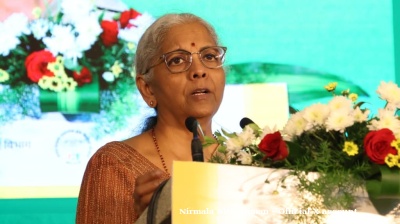Azerbaijani government sources on February 4 moved to reiterate that Baku is in no doubt that it was a Russian surface-to-air Pantsir-S missile that on December 25 hit Azerbaijan Airlines (AZAL) Flight 8243 during the aircraft’s approach to the Chechnyan capital Grozny in Russia. Events led to a crash-landing that killed 38 of 67 aboard.
"The Azerbaijani side possesses a fragment of a Pantsir-S missile which was extracted from the aircraft and identified through international expertise," a source told Reuters. The statement represented the first time Azerbaijan has claimed to have physical proof of a missile impact on the plane.
After suffering damage, the aircraft—an Embraer 190AR that departed for Grozny from Heydar Aliyev International Airport in Baku—was diverted hundreds of kilometres across the Caspian Sea where the crew crash-landed three kilometres from Aktau International Airport in Kazakhstan.
Also on February 4, Azerbaijan’s pro-government Trend News Agency pointed to the release of photographs of what it described as fragments from the surface-to-air missile that it stated downed the passenger plane, the front part of which exploded in a fireball as it hit the ground in Kazakhstan.
The Azerbaijan Airlines (AZAL) passenger aircraft forced to crash-land at the cost of 38 lives after being diverted from Russian airspace to Kazakhstan sustained external damage, with multiple punctures across its fuselage, according to a cautiously worded official Kazakh government preliminary report published on February 4.
Around the time of the air disaster, Russian officials were reporting Ukrainian attack drone activity in the vicinity of Grozny. Azerbaijan’s President Ilham Aliyev—involved in rising tensions with Moscow over issues including Russia’s stance on Armenia—has previously stated that the aircraft was accidentally struck by ground fire in Russia. The difficulty is that although Russian Vladimir Putin took the rare step of issuing an apology to Baku, he simply referred to a “tragic incident”. Neither he nor Kremlin officials have acknowledged responsibility for the incident, stating only that a criminal investigation has been opened. Russian authorities have continued to insist that their investigation is being conducted by top aviation experts and that efforts were under way to determine the cause of the crash.
The Kazakh government’s report, issued in line with global aviation safety regulations after the examination of black box data, does indeed include photos of “foreign metal objects” removed from the outside of the aircraft’s fuselage found during its investigation of the aircraft but does not state that they are from an exploded missile. The report also includes photos of extensive structural damage done to the aircraft. Specifically, the images show the port-side tail section riddled with holes.
The report also refers to how a cockpit voice recorder captured the sound of two impacts within a 25-second span, after which the pilot initially reported a suspected bird strike. Five minutes later, he indicated loss of control over the aircraft.
As the situation deteriorated during the rerouting of the aircraft, the pilot reported to air traffic control that passengers were losing consciousness due to a likely explosion of an oxygen tank and requested permission to fly at a lower altitude. The aircraft transmitted a distress signal as it approached Aktau, before crash-landing one hour and 12 minutes after the initial incident.
The Kazakh investigation has not assigned any blame for the crash to any specific state entity or individuals.
Azerbaijan’s transport ministry has reaffirmed that the aircraft was fully airworthy before departing on the scheduled passenger flight to Grozny. The ministry also pointed to the Kazakh report’s findings that Russian air traffic controllers took eight minutes after the first recorded impacts to the plane to restrict flights over the area, despite the ongoing drone activity.
News

Trump authorises CIA covert operations in Venezuela to topple Maduro
The White House has acknowledged granting the Central Intelligence Agency sweeping powers to conduct covert operations aimed at unseating President Nicolás Maduro, the NYT reported.

India’s finance minister to miss upcoming IMF and World Bank meetings
India’s Finance Minister Nirmala Sitharaman will not attend this week’s annual meetings of the International Monetary Fund and World Bank in Washington, as trade negotiations between New Delhi and Washington remain unresolved.

Young Ukrainians asylum seekers fleeing the war for Germany surges
The number of young Ukrainian fleeing the war and seeking asylum in Germany has surged, following Ukraine’s decision to partially lift its travel ban for men aged 18 to 22, according to figures from the German Interior Ministry.

US may double support for Argentina to $40bn conditional on policy reforms
Washington buys Argentine pesos and mulls creating a new private sector-led $20bn debt facility, which would bring total support to $40bn with the existing swap line, Treasury Secretary Bessent said.




